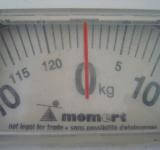Physical Education (PE) has great potential for helping to control overweight-but only if it is implemented AND actually engages students in ample amounts of physical activity. Unfortunately, very few states even report how many minutes of physical education are required in schools. PE is rarely scheduled daily and even when scheduled is often not held (about 20% of lessons are cancelled for various reasons-no substitute for PE teacher; gym not available; academic testing during PE time). When held as scheduled, actual PE length is only about 78% of the time scheduled for it. Clearly there is an obvious need for additional and more specific PE policies at many levels (state, district, school) together with consequences for not following them.

Meanwhile, the quality of PE is not uniformly optimal, and this got us thinking: If schools actually met the Society of Health and Physical Educator’s (SHAPE America) and the Institute of Medicine’s (IOM) recommendations for quality PE, how much could PE contribute to caloric expenditure and the potential for controlling for overweight and obesity?
Presently, we really don’t know much about this because we often talk in units (METs, % MVPA [moderate-to-vigorous physical activity]) that don’t translate well to students, parents, principals, school boards, and other stakeholders. Incorporating calories into the conversation may transform how PE is viewed. To start this question we needed data, and we did this in a recently published article, The Potential and Reality of Physical Education in Controlling Overweight and Obesity (Kahan & McKenzie, 2015).
In that paper, Thom McKenzie and I abstracted/summarized data from various reports and sources. We used basic energy expenditure formulas to calculate the number of calories an average-weight student and class would expend during PE under the following conditions: (a) was delivered according to SHAPE America standards (i.e. 50% MVPA, 30 minutes daily in elementary schools, and 45 minutes daily in secondary schools); (b) was delivered according to its typical dosage (35% MVPA); and (c) if PE was not held at all.

Individuals in schools providing quality PE at recommended professional levels (i.e. SHAPE America guidelines) could expend about 160,000 calories between grades 1 and 10. However, in schools in the 19 states that had policies for PE, the 50% MVPA values dropped by nearly 40% to just over 100,000 calories because the average minutes of PE required in these states is only between 61% (elementary schools) and 72% (high schools) of SHAPE America’s recommendations. In cases when MVPA was 35% (i.e. in most PE lessons) rather than the recommended 50%, caloric expenditure over 10 years was reduced by an additional 10,000 calories. Meanwhile, if PE time was replaced by the same number of minutes of classroom instruction, the average child in the 19 states would expend only 50,000 calories over 10 years.
For an entire class of students, the numbers are even more staggering. Using the PE class sizes recommended by SHAPE America, delivery of quality PE could contribute energy expenditures of around 1.4 MILLION calories across elementary and middle school grades each, plus an additional 1.9 MILLION calories during 2 years of high school PE.
While acknowledging there is some controversy about making interpretations based on the static energy model, when converting these caloric values to pounds, PE following the SHAPE America standards has the potential for reducing the weight of a class of average-weight students during elementary (5 years), middle (3 years), and high school (grades 9 and 10 only) years by 400, 400, and 540 pounds, respectfully.
Significantly our analysis considered only energy expenditure during PE classes. We did not consider the possibility of increased energy expenditure (and other benefits) outside of class that children might accrue from being more physically fit, having greater skills, and being more motivated to be active. As physical and health educators we are very aware of the need to advocate the benefits of quality PE. However while there are many good reasons to justify quality PE our paper went beyond these by identifying one aspect of PE programs that typically goes overlooked. Quality PE, if held, can help control the rampant expansion of overweight and obesity among children and adolescents.
As it’s becoming increasingly evident, a waist is a terrible thing not to mind!
Reference
Kahan, D., & McKenzie, T. L. (2015). The potential and reality of physical education in controlling overweight and obesity. American Journal of Public Health, 105(4), 653-659.

Hello Dear Professor McKenzie
I am a lecturer Mr. Nazari of Iran.
I have read and I enjoyed your article
And is writing a doctoral thesis’m in school physical education (objectives, content, teaching methods and evaluation).
I would like you to help me and send me literature in this field.
I also invite you to Iran and to the beautiful city of Isfahan